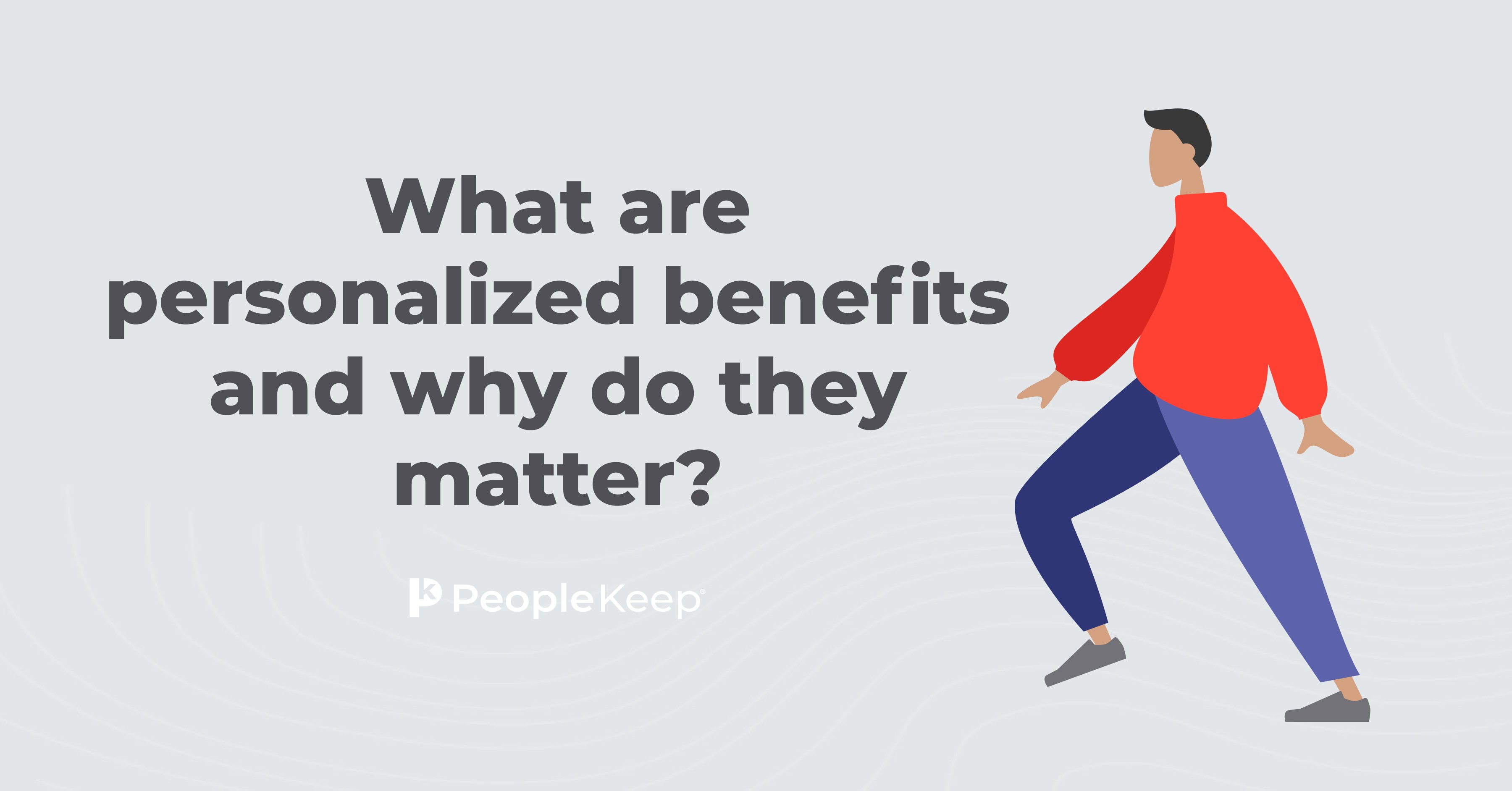What is a family stipend?
By Elizabeth Walker on September 13, 2023 at 8:45 AM
An employee's family life can directly impact their engagement and productivity at work. According to a Harvard Business School study, 73% of employees have some sort of familial caregiving responsibility, and 80% of them are impacted by that responsibility at work. Stress from this balancing act and the financial challenges it brings can not only hurt job performance, but it can also lead to burnout and chronic health conditions.
One way you can support your employees and their families is with a family stipend. These stipends are a great way to offer your employees extra financial assistance to better provide for their families, reduce stress, and stay focused at work. Moreover, they show your staff you care about them both inside and outside of the workplace.
In this article, we’ll go over everything you need to know about family stipends, including how they work, what they cover, and how you can offer one at your organization.
What is a family stipend?
A family stipend is a set amount of money employers give their employees to pay for family-related expenses. While some employers design childcare stipends to cover childcare and other related costs, family stipends cover a broader range of family expenses, whether they involve children, seniors, or pets.
Stipends are separate from an employee’s regular wages. You can offer them as a one-time payment, on a monthly, quarterly, or annual basis, or as a reimbursement. Offering family stipends on a one-time or recurring basis is easier to administer quickly.
The IRS considers stipends supplemental income. Employers aren’t required to withhold Social Security or Medicare taxes for stipends. Still, you must report the amount on your employees’ W-2s at the end of the year, and employees must pay annual income taxes and any Social Security and Medicare taxes on the amount they receive.
Even though they’re taxable, family stipends help working parents and caregivers control their finances in the long run and increase employee satisfaction2.
What can a family stipend cover?
Family stipends are flexible. There’s no limit to what they can cover. As an employer, you can choose which expenses are eligible under the benefit if you use a stipend administration software. You can match what your competitors cover if you’re focused on attracting top talent or survey your employees to design a more personalized benefit.
Additionally, there’s no minimum or maximum amount of money you must offer with a stipend. You can determine your allowance based on your budget and the needs of your employees. If you need additional guidance, you can use the average cost of the expenses you’d like to cover to set an allowance that will give your employees the most value.
Some common examples of eligible expenses—including their average costs—that your family stipend can cover are:
- Childcare expenses
- The average cost of childcare in the U.S. is $14,760 annually3.
- Dependent or senior care expenses
- The average cost of senior care at an assisted living facilities in the U.S. is $54,000 annually4.
- Illness or injury expenses
- Individuals without health insurance can receive a hospital bill of almost $38,000 for a hip replacement.
- Fertility benefits
- Often not covered by health insurance, a single round of in vitro fertilization (IVF) costs an average of $12,000 to $13,000.
- The average cost of surrogacy and related costs is about $100,0005.
- Adoption expenses
- According to the Child Welfare Information Gateway6, adopting a child through a private agency costs adoptive parents $30,000-$60,000.
- Pet insurance and other pet care costs
- The average monthly cost of pet insurance is between $29-$49.
- The total average cost of pet care for dog owners is between $1,350 to $4,150 annually7.
- Bereavement, such as funeral and burial costs
- Funeral and burial costs are an average of $7,8488.
Once you’ve designed your benefit, you should communicate its details to your employees. In your benefits package, outline how the stipend works, what eligible expenses it covers, any tax responsibilities, its allowance amount, how frequently that allowance will be made available, and other pertinent information. This way, your staff will understand how to use the stipend, and your benefit dollars won’t go to waste.
What are the advantages of family stipends?
Adding a family stipend to your benefits package is an effective way to appeal to current and prospective employees. But if you’re still undecided, below are four major benefits of offering family stipends to your employees.
1. They highlight your company’s values
Employers that offer unique perks in addition to standard benefits like health insurance show their employees they care about their workers in all areas of their lives. That’s why many employees, especially younger workers, look for companies that offer a wide variety of benefits.
For example, Forbes9 recently found that over 30% of employees ages 18-41 want a pet insurance benefit. Another article10 reported that 70% of millennials would leave their job for another that offered fertility benefits.
With a family stipend, you could offer these benefits and showcase your company’s values and commitment to the items and services your employees care about most.
2. They reduce burnout
The challenges of family life vary for everyone. Parents, caregivers, and those looking to start a family often battle exhaustion and busy schedules, and the need to be productive can drain anyone. Family stipends can help reduce distractions and financial pressures that may impact an employee’s effectiveness in and outside the office.
Whether an individual needs daycare services, pet sitting, or help caring for an older parent, they can use their stipend to manage their personal lives better so they can come to work refreshed and less likely to experience burnout.
3. They increase retention
When employees feel valued and supported, they’re more likely to remain at your organization. This is especially true if they receive benefits they’re unlikely to have at another company.
If you’re struggling with turnover, offering personalized benefits, like family stipends, provides a strong incentive for employees to stick around for the long haul. Companies with high retention rates experience lower hiring costs, improved employee morale, and better engagement.
4. They keep your company competitive
Family stipends are rising in popularity, but they’re not regular additions to benefits packages yet. That’s why organizations offering family stipends can set themselves apart in a competitive job market by promoting them in their job descriptions. Family stipends show that you’re inclusive and an employer of choice. This can help you stand out from your competitors and help attract skilled candidates.
In addition to family care stipends, there are other ways you can make your benefits package competitive. Offering parental leave, flexible work schedules, paid time off (PTO), and professional development opportunities are all essential to your employees’ overall health and happiness.
Conclusion
Working parents and caretakers have busy lives. Not only must they manage a healthy work-life balance but they may have trouble managing additional family-related expenses.
With a family stipend, you can offer an inclusive and personalized benefit that will meet all your employees’ needs—no matter what caregiving responsibilities or financial needs they have.
- https://www.hbs.edu/managing-the-future-of-work/Documents/The_Caring_Company.pdf
- https://www.hoppier.com/blog/when-why-you-should-offer-employee-stipends#:~:text=Why%20Should%20I%20Consider%20Employee%20Stipends%3F%C2%A0
- https://illumine.app/blog/how-much-childcare-costs-by-state-in-usa/#:~:text=On%20an%20average%2C%20families%20pay,preschooler%20is%20nearly%20%2410000%2Fyear.
- https://www.seniorliving.org/nursing-homes/costs/#:~:text=of%20nursing%20homes.-,Cost%20of%20Nursing%20Homes%20vs.%20Assisted%20Living,-Assisted%20living%20costs
- https://www.investopedia.com/how-much-does-a-surrogate-cost-6752258
- Child Welfare Information Gateway
- https://www.benzinga.com/money/average-cost-of-pet-care
- https://www.policygenius.com/life-insurance/how-much-does-a-funeral-cost/
- https://www.forbes.com/advisor/business/best-employee-benefits/
- https://onlabor.org/the-rise-of-fertility-benefits-at-work/
Check out more resources
See these related articles

How to boost your benefits package
Boost employee satisfaction by offering a competitive benefits package. Learn how to create an attractive package that meets the needs of your employees.

What is pet insurance, and how can I offer it?
This blog takes you through the ins and outs of pet insurance, how it works, what it does and doesn’t cover, and how you can offer it to your employees.

What are personalized benefits and why do they matter?
Personalized benefits are the key to attracting and retaining top talent. Find out why they matter and how you can offer them to your employees.



